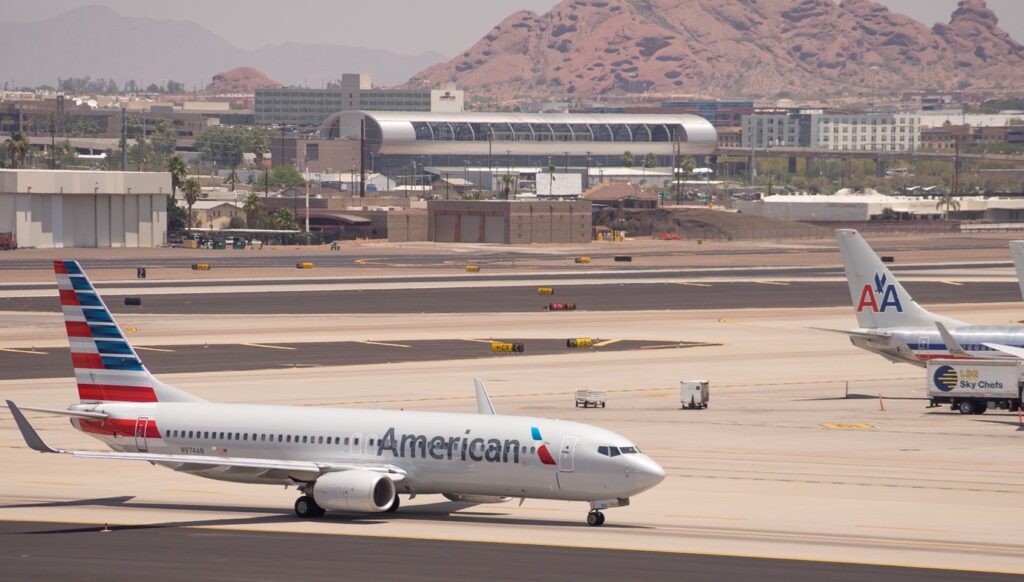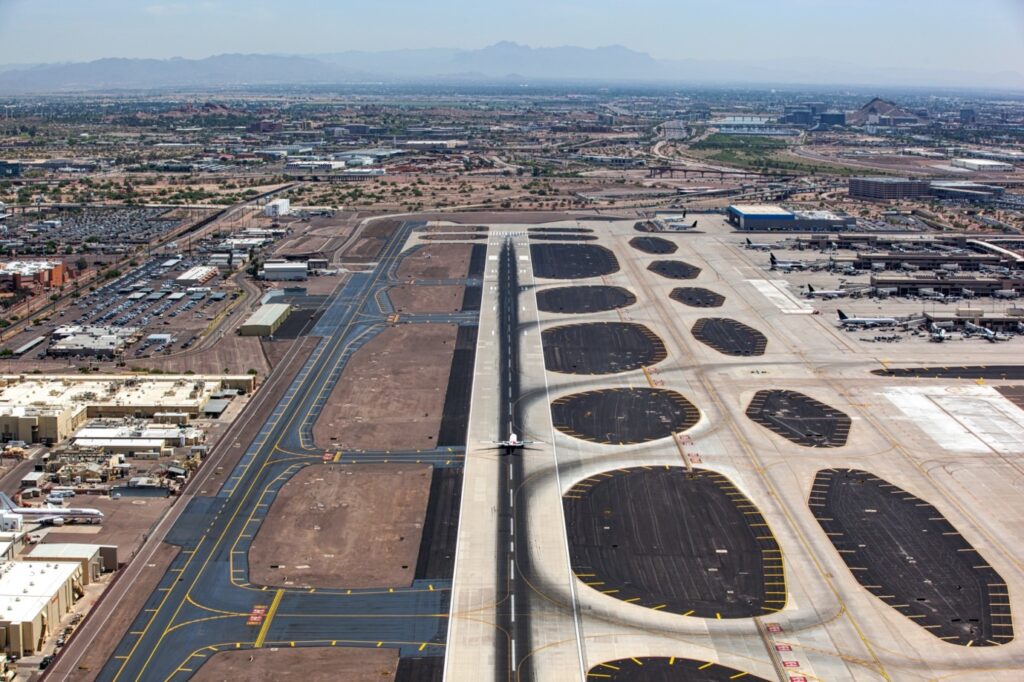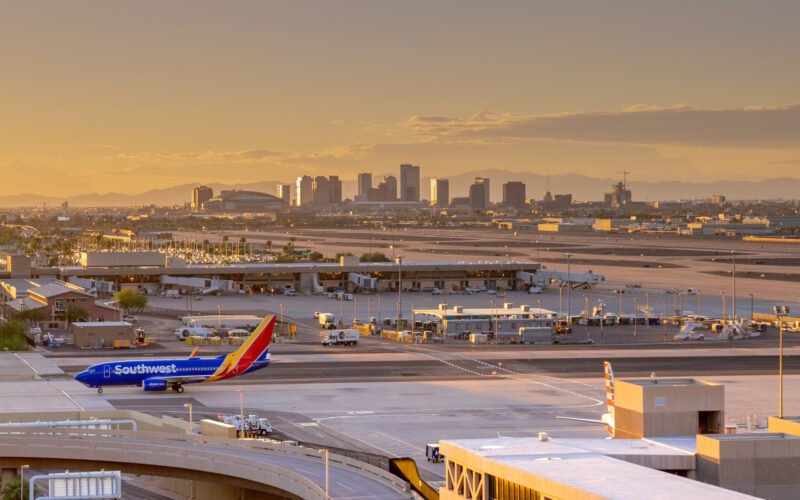Situated in the heart of the American Southwest, Phoenix Sky Harbor International Airport (PHX) is much more than just an aviation hub for American Airlines and a base for Southwest Airlines. From its origins in the late 1920s to its current status as one of the busiest airports in the United States, PHX has witnessed the transformation of the aviation industry and its role in shaping global connectivity.
History
Phoenix Sky Harbor International Airport officially opened its doors 94 years ago, initially serving as a small municipal airport with one runway. Maddux Air Lines launched the PHX’s first scheduled passenger service on February 23, 1929. Its strategic location attracted the attention of various airlines and by 1952, PHX had become a stopover for major airlines including American, Western, TWA (Trans World Airlines) and Frontier Airlines.
During World War II, the airport served a vital role as a military facility. The United States Army Air Forces used it as a training base, bringing a surge of activity to the previously quiet airfield.
In 1935, the city of Phoenix purchased the airport from the Acme Investment Company for $100,000, marking the start of a new era of modernization and expansion. As Phoenix grew into a major metropolitan area, the airport’s growth mirrored that of the city.
The airport’s first terminal, Terminal 1, was opened in 1952, followed by Terminal 2 in 1962. Terminal 3 was introduced in 1979, and Terminal 4, the largest and busiest, was unveiled in 1990.
Nowadays around 1,200 aircraft and over 125,000 passengers arrive and depart and over 1,000 tons of cargo are being handled every day.

Terminals and amenities
Phoenix Sky Harbor International Airport has two active terminals, each equipped with a host of amenities to make traveling a pleasant experience for its patrons.
Terminal 1: originally referred to as the ‘West Wing’, it was one of the nation’s most cutting-edge airport terminals in the country at the time, coming in at a cost of $835,000 and incorporating the airport’s first control tower. However, in 1991 this terminal was demolished, and its location has since been repurposed into the West Economy parking lot.
Terminal 2: closed in 2020, as it could not handle the increased demands of air travel. The area will be used for aircraft bus gates
Terminal 3: after a comprehensive modernization project completed in 2020, Terminal 3 now hosts a range of airlines, offering domestic and international flights. With an extensive array of dining and shopping options, Terminal 3 seamlessly merges the traditional airport experience with modern, high-quality services.
Terminal 4: as the airport’s largest terminal, Terminal 4 services the majority of Phoenix Sky Harbor’s passenger traffic. It hosts American Airlines and Southwest Airlines among others, providing both domestic and international flights. The terminal is equipped with a plethora of amenities, including retail outlets, restaurants, lounges, and even its own Phoenix Airport Museum, which boasts an impressive collection of fine art.

Transportation and connectivity
PHX is conveniently located in the east of downtown Phoenix, making it easily accessible via several modes of transportation. The PHX Sky Train offers free transportation 24/7, connecting the airport terminals, the East Economy Parking area and Valley Metro Rail. Rental car services, ride-share services, taxis and public transit options are also available.
Future plans
In its pursuit of excellence and service to its community, Phoenix Sky Harbor has outlined ambitious plans for the future. These include further expansion of Terminal 4 aimed at incorporating a new concourse with eight gates, which is utilized by Southwest Airlines for its operations. Also in the pipeline are improvements in parking facilities and enhanced road infrastructure to improve access to the airport.

